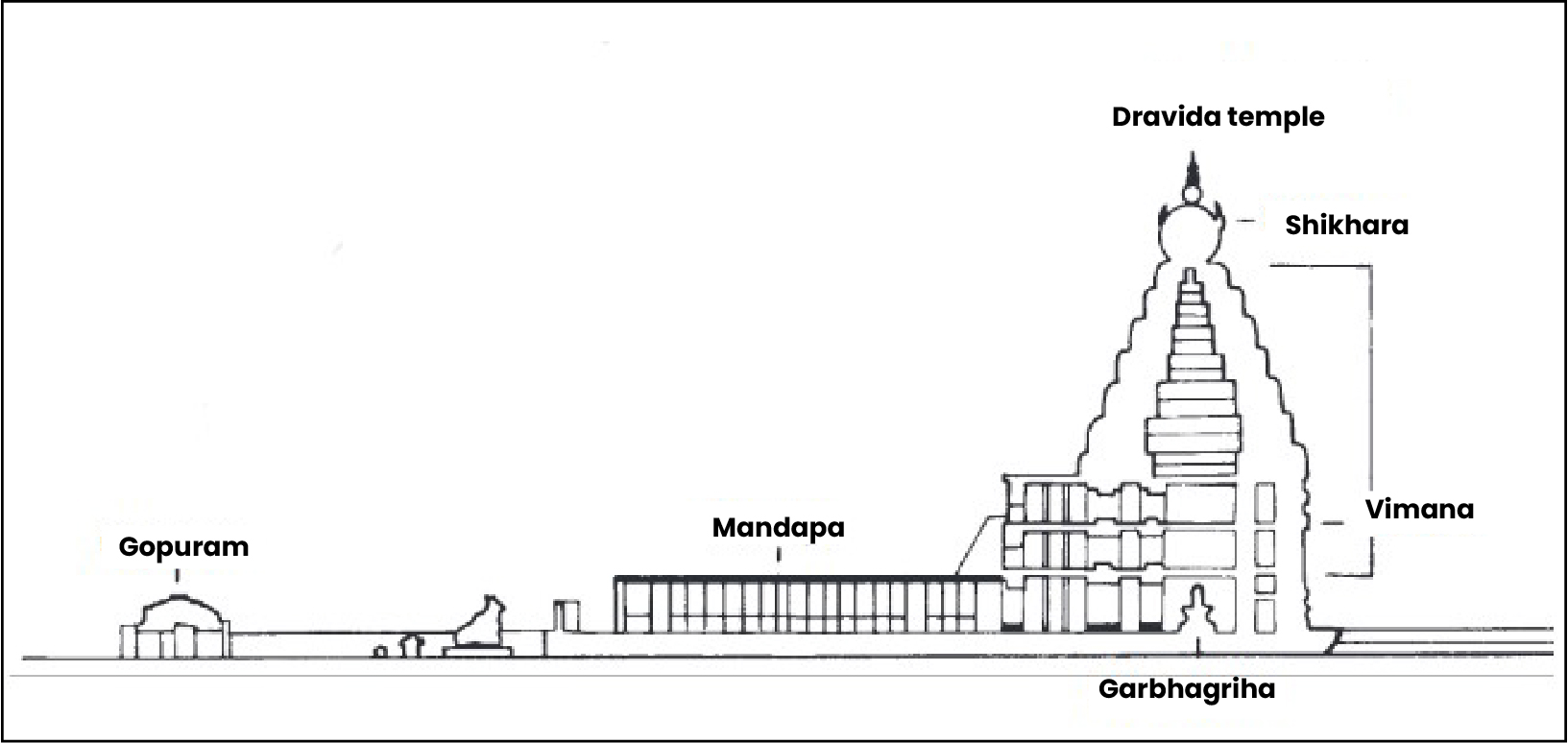The Virupaksha temple’s pavilion or the ‘saalu mantap’ collapsed following torrential rains.
About Virupaksha Temple
- Temple is dedicated to Lord Virupaksha (or Pampapathi), a form of Shiva and consort of local goddess, Pampa.
- Located at Hampi, which was the capital city of Vijayanagara kingdom (14th CE - 17th CE).
- It is part of the Group of Monuments at Hampi which is considered a UNESCO World Heritage Site.
- It is a prime example of Dravida style of temple architecture, characterized by its grand gopuras, Vimana, intricate carvings, and pillared halls.
Temple History
- The Virupaksha temple was built over centuries with inscriptions suggesting that the earliest shrine dated to the ninth-tenth centuries.
- Dynasties such as Pallavas, Chalukyas, Hoysalas and Cholas greatly contributed to the temple but it was substantially enlarged with establishment of Vijayanagara Empire.
- Vijayanagara’s Sangama kings transformed the shrine into a major religious monument and Tuluvas greatly expanded the temple.
- Krishnadeva Raya (1509-29 CE) constructed a hall in front of the main shrine to mark his accession. He also constructed the eastern gopuram.
Features of Dravida Temple Architecture
|




